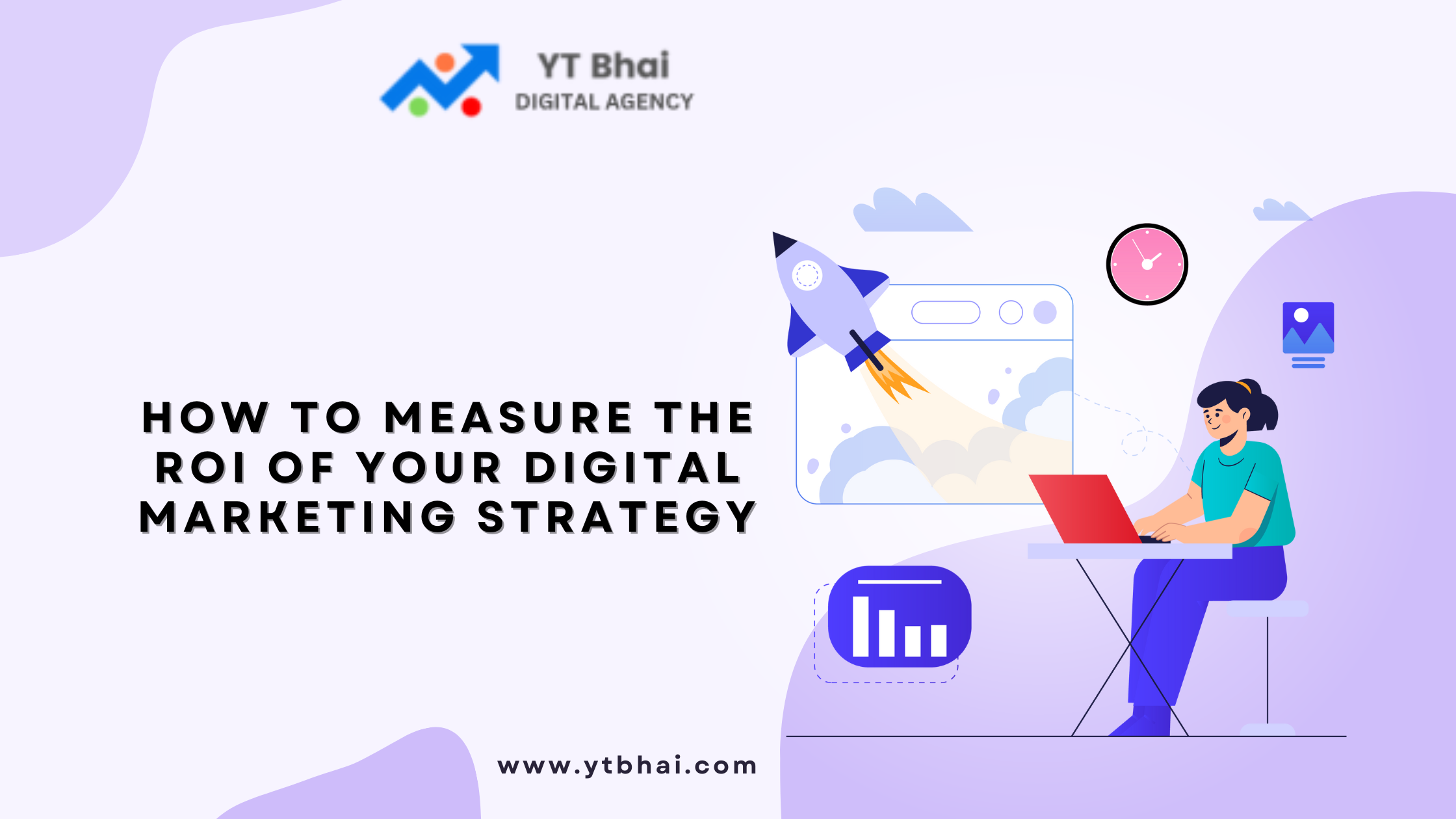
In today’s data-driven world, every dollar spent on marketing needs to show results. Calculating the Return on Investment (ROI) of your digital marketing strategy is crucial to ensure that your efforts align with business objectives. ROI helps businesses gauge the profitability of their campaigns, optimize spending, and make data-backed decisions.
This comprehensive guide will walk you through the process of measuring digital marketing ROI, from setting goals to tracking key metrics, and overcoming common challenges.
What is ROI in Digital Marketing?
ROI in digital marketing measures the revenue generated from a campaign against its costs. It answers the fundamental question: “Is my investment yielding positive returns?”
Formula:
ROI (%)=Net ProfitInvestment×100\text{ROI (\%)} = \frac{\text{Net Profit}}{\text{Investment}} \times 100
For instance, if you invest $1,000 and earn $2,500 in revenue, your ROI is 150%.
Why Measuring ROI is Important
- Budget Optimization: Identify which campaigns are worth continuing or scaling.
- Performance Insights: Understand what drives results and improve future strategies.
- Accountability: Justify marketing spend to stakeholders.
- Long-term Growth: Align campaigns with business goals for sustainable growth.
The ROI Formula Explained
| Metric | Formula | Example |
|---|---|---|
| ROI (%) | (Net Profit ÷ Investment) × 100 | ($1,500 ÷ $1,000) × 100 = 150% |
| Cost per Lead (CPL) | Total Campaign Cost ÷ Total Leads Generated | $1,000 ÷ 50 leads = $20 per lead |
| Conversion Rate | (Conversions ÷ Total Visitors) × 100 | (25 ÷ 500) × 100 = 5% |
| Customer Lifetime Value (CLV) | Avg. Purchase Value × Purchase Frequency × Avg. Customer Lifespan | $50 × 2 × 3 = $300 |
Key Metrics for Measuring ROI
To measure ROI accurately, track the following metrics:
- Traffic Metrics: Website visits, page views, and unique visitors indicate the effectiveness of awareness campaigns.
- Conversion Rates: Measure how many visitors take the desired action, such as filling out a form or purchasing a product.
- Customer Acquisition Cost (CAC): The total cost of acquiring one customer, including ad spend, tools, and resources.
- Customer Lifetime Value (CLV): The revenue a customer generates over their lifetime.
- Engagement Metrics: Likes, shares, comments, and email open rates reflect campaign engagement.
How to Track ROI Across Digital Channels
| Channel | Key Metrics to Measure | ROI Evaluation |
|---|---|---|
| SEO | Organic traffic, ranking keywords, CTR | Track long-term growth in organic leads. |
| PPC | Clicks, conversions, CPC, CPA | Compare ad spend with revenue generated. |
| Social Media | Engagement rates, follower growth, conversions | Analyze revenue from social campaigns. |
| Email Marketing | Open rates, CTR, conversion rates | Measure sales from email campaigns. |
| Content Marketing | Time on page, bounce rate, inbound leads | Assess leads and sales from blog traffic. |
Tools to Measure ROI Effectively
- Google Analytics: Tracks website traffic, conversions, and user behavior.
- HubSpot: Provides an all-in-one CRM for tracking leads and marketing ROI.
- SEMrush: Analyzes SEO performance and content ROI.
- Facebook Ads Manager: Evaluates ad performance, reach, and cost per result.
- Mailchimp: Tracks email campaign performance and ROI metrics.
Common Challenges in Measuring ROI
| Challenge | Solution |
|---|---|
| Attribution Issues | Use multi-touch attribution models to track touchpoints. |
| Tracking Offline Conversions | Integrate CRM tools to connect offline sales data. |
| Inconsistent Data | Use centralized analytics tools for accurate reporting. |
| Long Sales Cycles | Monitor ROI over extended periods for better insights. |
Case Studies of Successful ROI Measurement
- Company A: PPC Campaign Success
By tracking conversion rates and CPA, Company A optimized its Google Ads campaigns, reducing CAC by 30% and increasing ROI by 50%. - Company B: Email Marketing Optimization
With A/B testing, Company B improved email open rates by 20%, leading to a 40% increase in sales. - Company C: Content Marketing ROI
Using detailed content performance analytics, Company C identified high-performing blog topics, driving a 3x increase in inbound leads.
Best Practices for Improving ROI
- Set Clear Goals: Define specific, measurable objectives for every campaign.
- Leverage Automation: Use tools to streamline processes and reduce costs.
- Focus on High-Performing Channels: Invest more in platforms that deliver the highest ROI.
- Continuously Optimize Campaigns: Use A/B testing and analytics to refine strategies.
- Adopt Multi-Touch Attribution: Evaluate the impact of all customer touchpoints.
Conclusion
Measuring the ROI of your digital marketing strategy is not just about crunching numbers—it’s about gaining insights to drive growth. By setting clear goals, leveraging the right tools, and continuously optimizing your campaigns, you can maximize your marketing investments and achieve sustained success.
Start small, analyze results, and iterate for continuous improvement. With a data-driven approach, you’ll ensure every dollar spent contributes to your bottom line.
FAQs
1. What is ROI in digital marketing?
ROI measures the profitability of your digital marketing efforts by comparing revenue generated to the investment made.
2. Why is measuring ROI important?
It helps determine which campaigns are effective, optimize budgets, and justify marketing spend to stakeholders.
3. How do I measure ROI for SEO?
Track organic traffic, keyword rankings, and leads generated from search engines to calculate SEO ROI.
4. What tools can I use to measure ROI?
Popular tools include Google Analytics, HubSpot, SEMrush, and Facebook Ads Manager.
5. What’s the biggest challenge in measuring ROI?
Attribution issues, especially in multi-channel campaigns, can complicate ROI measurement. Using multi-touch attribution models helps resolve this.
